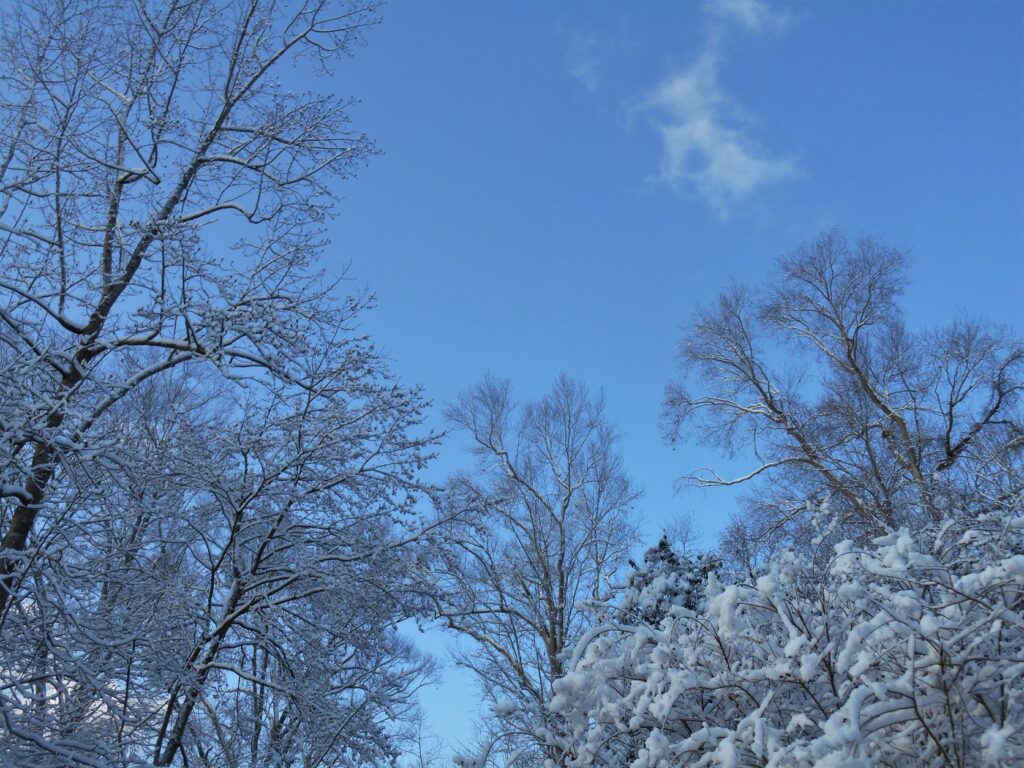Weather Alert: Winter Cold
The Williamsburg area has recently been rezoned by the USDA to a slightly warmer Zone 8a. But temperatures can still get down to 5°F or -15 °C, although we don’t typically see temperatures much below the 20s. So as we pull out our gloves and coats, here are some simple things we can do even now to prepare for when extreme cold weather is in the forecast.
Tips for Protecting Plants
Potted shrubs and perennials hardy to Zone 6 or lower should be be fine whether planted in containers or in the ground. But shrubs hardy only to Zone 7 may need some extra protection from unusually cold, frozen ground and freezing winds, particularly when planted in containers.
All containers with tender perennials and marginal plants should come indoors. Even an unheated garage or basement will help protect them from the extreme cold. Move other planted containers near the foundation of the house, under a deck, porch, or eaves if possible, and out of the wind. The house provides tremendous shelter.

Ice insulates plants from wind damage during cold spells. Ice on woody plants helps protect evergreen leaves and flower buds.
Ceramic pots can crack in the prolonged cold as any remaining potting mix expands. Move pots to the best shelter you can. Pots too large to move can be wrapped in bubble wrap, burlap, old blankets, or any other insulating material on hand. Lower any hanging baskets to a protected spot near a wall or between larger containers. Empty anything that can hold water. Since water expands when it freezes, any standing water can damage containers, saucers, and masonry as it freezes.
Spread leaves, straw, commercial mulch, or downfall branches over the roots of marginal perennials and shrubs. Bring tomato cages out of storage to shelter small evergreen shrubs, like Camellias and Rhododendrons, which might not be able to take the icy winds. Drape the cages with heavy plastic, a tarp, or even shade cloth to break the wind and provide some insulation. Just as we add layers when it is cold, we can do what we can to add layers of protection for our garden. If we can protect a plant with a bit of shelter or insulation, it may save needing to replace it or waiting for it to grow back from its roots.
If you keep a gardener’s notebook, then you may already know the hardiness zones of plants in your garden. If you aren’t sure, look up any perennials, trees, or shrubs that may concern you on an authoritative website like Missouri Botanical Garden’s Plant Finder.
Indigenous native plants will generally survive all but the most extreme variations in weather. Naturalized native plants that come from points south may still need protection. Climate change can make normal temperature variations more extreme. Botanists tell us that extreme cold can be more damaging to woody plants than extreme heat.
Established plants will be more resilient than those planted recently. Trees and shrubs in exposed locations may need more care than those growing near walls and fences or other windbreaks.

Thermogenic plants, like Arum, produce metabolic heat to protect their leaves. Ground covers and mulch help protect the roots of nearby shrubs during cold spells.
Here in Zone 7b, we don’t have our routines established for dealing with extreme weather. In colder climates, many gardeners routinely wrap shrubs in layers of burlap or row cover material to protect evergreen leaves from damaging cold winds. We just have to think through which plants we need to save and protect, and then improvise with the materials we have at hand.
Tips for Preparing Your Home for Cold Weather
Remember to disconnect and empty garden hoses, and then cover outdoor spigots with foam spigot covers. Make sure all of the foundation vents are covered. Check areas around water pipes if they are exposed under the house. You can find foam insulation at many hardware stores to protect exposed pipes in crawl spaces, basements, and garages, particularly those that supply your washing machine and water heater.
Indoors, you can help protect the plumbing by leaving sink cabinet doors open a little so that the heat from your house reaches the pipes. This is especially important for sinks on outside walls. When temperatures go below 20F, consider leaving a drip on overnight in a few sinks. It also helps to add insulation around windows and at exterior thresholds. Painter’s tape around windows can temporarily stop drafts. Even a rolled-up towel can stop a lot of cold air from coming in under doors.
Like every other challenge, we can manage a spot of cold when we think it through. This, too, shall pass, and spring will return in a few short weeks.

Perennials left standing until early spring provide habitat and winter food for wildlife. Uncut stems also help protect the perennial’s crown from extreme cold.
All photos by Elizabeth McCoy






